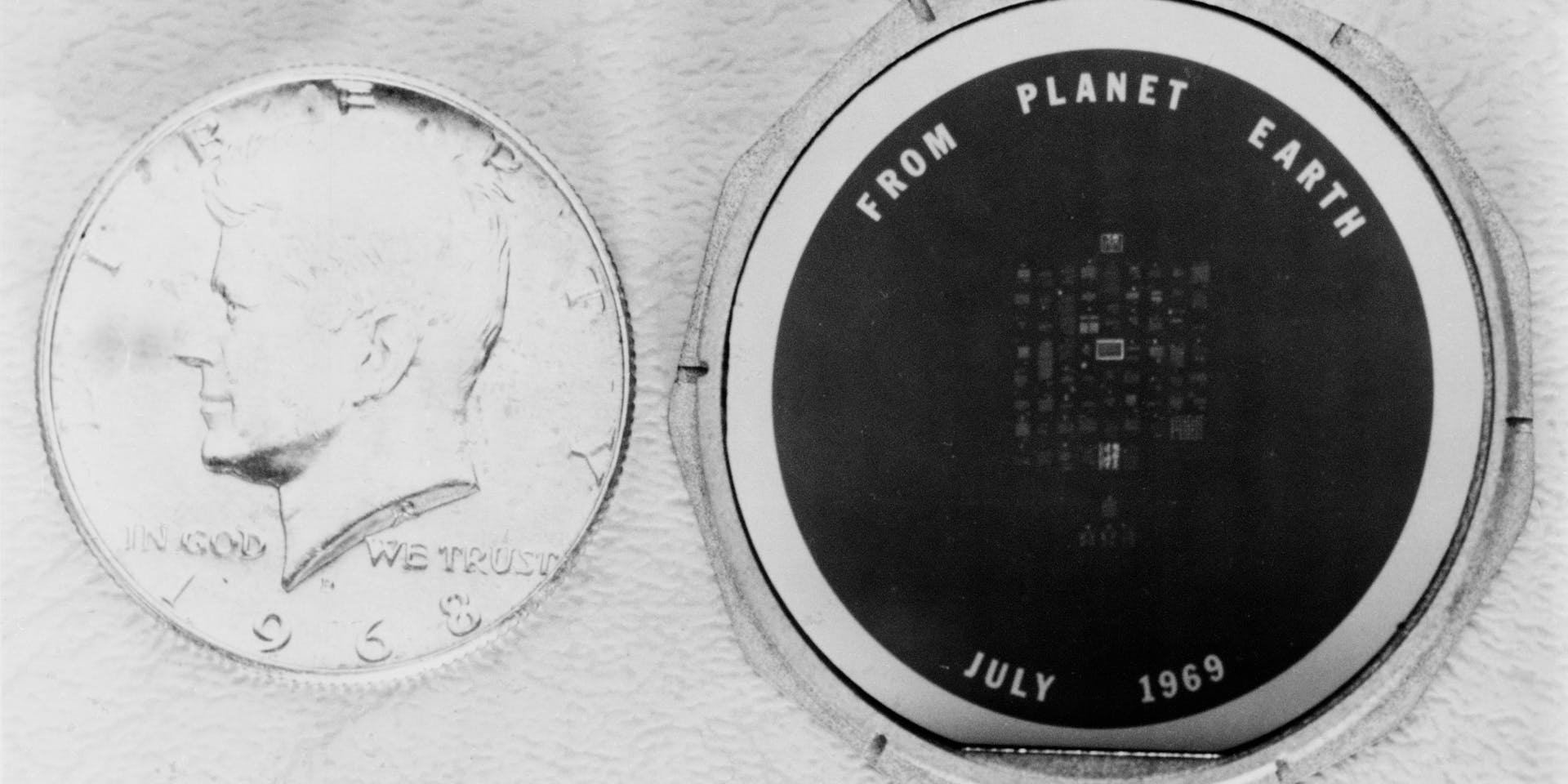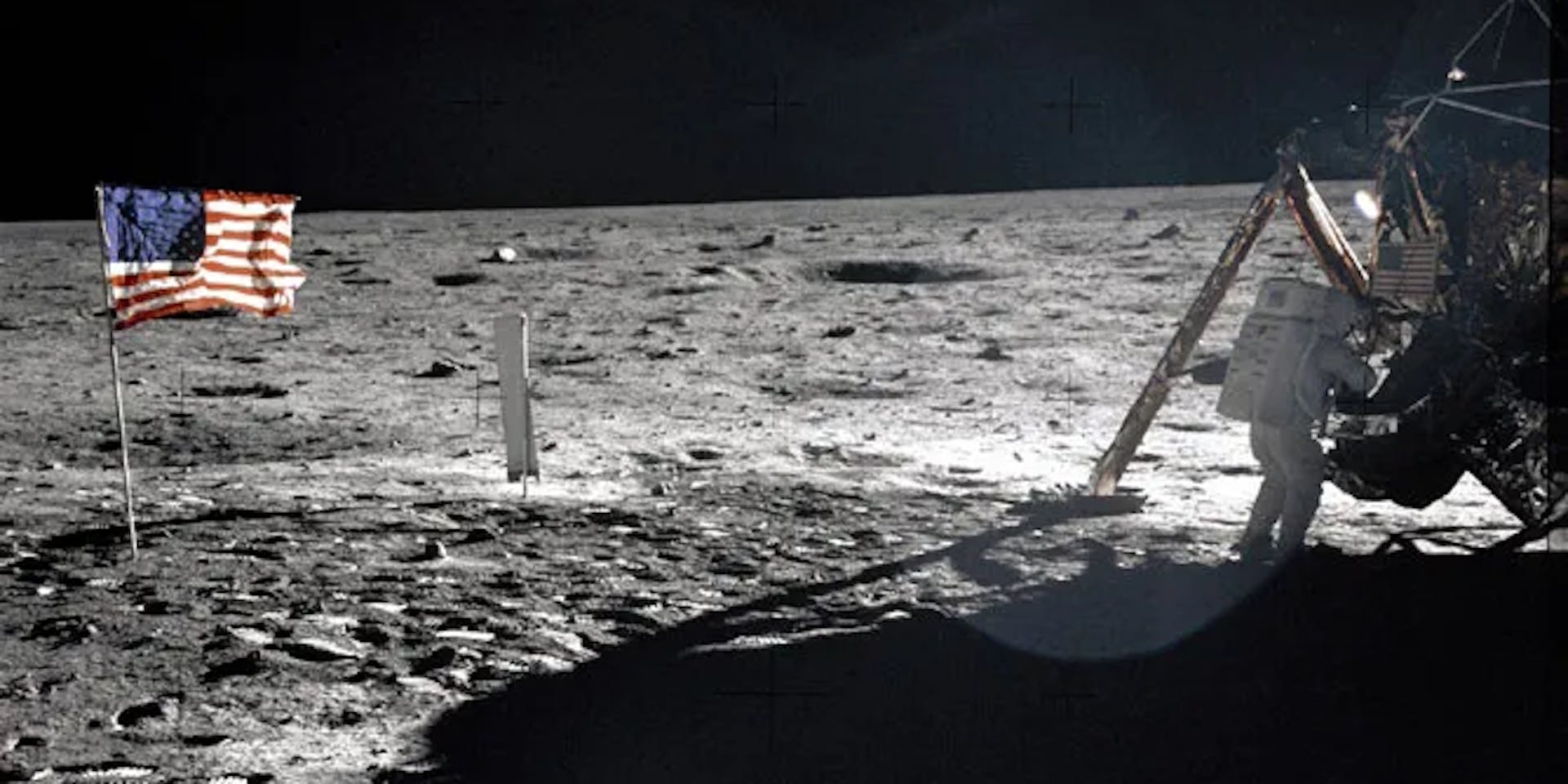Interstellar bottles - Episode 1: The disc of peace

Prior to Sanctuary, other projects have endeavored to deposit testimonies of humanity on the lunar surface or in orbit around the Moon. Here's a six-part presentation of these interstellar bottles thrown into the immensity of space.
With his blue silicone gloved fingertips, he grasped another rung on the ladder. A few more efforts and Buzz Aldrin will be back in the pressurized cabin of the Eagle lunar module of the legendary Apollo 11 mission. On July 20, 1969, the American astronaut became the first man in history to walk on the Moon, along with his compatriot Neil Armstrong. The duo spent a total of 2 hours and 31 minutes exploring the Moon's ashen surface. They were running out of time, and had already been told several times by the base to return home. Suddenly, Aldrin froze in his tracks. His partner had just called out to him:
- "What about the package you were supposed to take out of your sleeve? Did you do it?" asked Armstrong.
- "No, do you want it now?"
- "Yes, absolutely."
Before the two men could reach for safety, they had to perform one final task that could be described as a highly confidential mission ... Aldrin reached into a corner of his suit, at the top of his left sleeve, and pulled out a small white cloth bag, which he then tossed into the air. Since gravity on the moon is six times weaker than on Earth, the object descended slowly to the ground. Armstrong then kicked it away from the spacecraft to prevent it from being damaged during takeoff. More than half a century later, the precious relic remains in the same location in the southwestern corner of the Sea of Tranquility...

This stagnation is due to the fact that, unlike the Earth's surface, the lunar environment is devoid of an atmosphere and life. But what can a bag made of the same flame-retardant fabric used to cover astronauts' spacesuits contain? It included a patch from the Apollo 1 mission in memory of the astronauts who died during a ground exercise; two commemorative medals honoring Yuri Gagarin and Vladimir Komarov, Russian astronauts who also died in tragic circumstances; a golden olive branch symbolizing peace; and, most intriguingly, a black disc, barely larger than a coin, measuring 38 mm in diameter. The object is made of 99.999% pure silicon, to protect it from shocks, and is encased in an aluminum protector on which the words "From Planet Earth" appear at the top and "July 1969" at the bottom.
In order to ascertain the object's true nature, one must examine it under a microscope. This reveals 73 " messages of goodwill " written by the leaders of various countries, including Indira Gandhi to the Shah of Iran, King Baudouin of Belgium, King Hassan II of Morocco, Léopold Sédar Senghor, and Queen Elisabeth II. These humanist declarations are reproduced in facsimile thanks to an ultra-innovative engraving process similar to that used for printed circuits with letters no wider than a quarter of a human hair. The centerpiece is Pope Paul VI's message, framed in gold.

The American flag planted by the two astronauts was dislodged by the blast of air emitted by the lunar module as it ascended. However, the stainless steel plaque commemorating the mission, which was originally attached to the scale of the spacecraft, is still in place. In addition to the signatures of the three astronauts who participated in the legendary expedition, it bears the signature of Richard Nixon with the inscription, "We came in peace for all mankind."
In addition to their stated objectives, these initiatives allowed the United States to convey international recognition of the significance of the first human steps on the Moon. This pacifist message was also a highly strategic move.